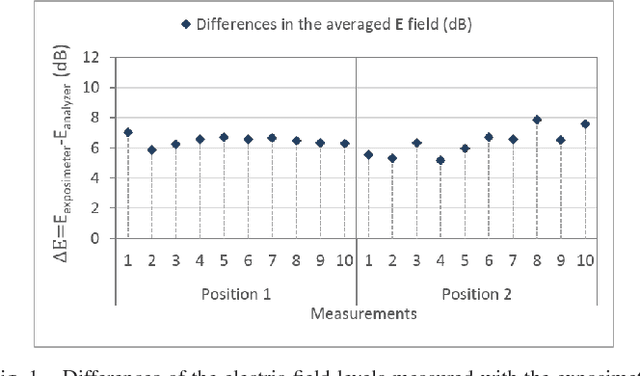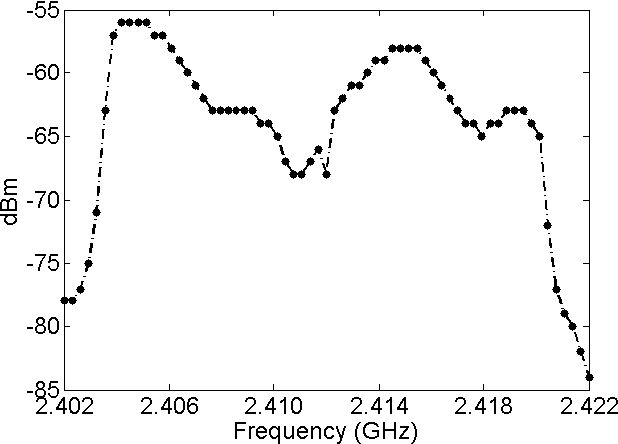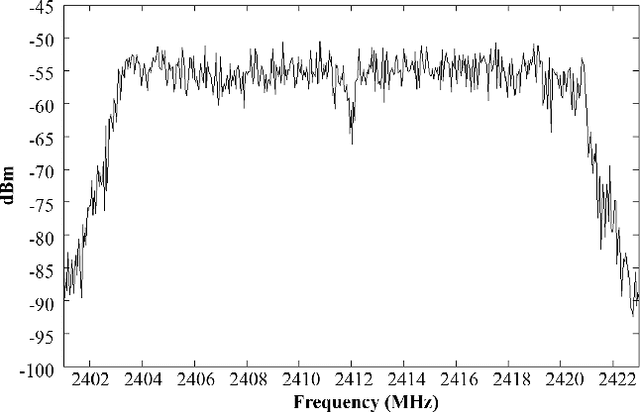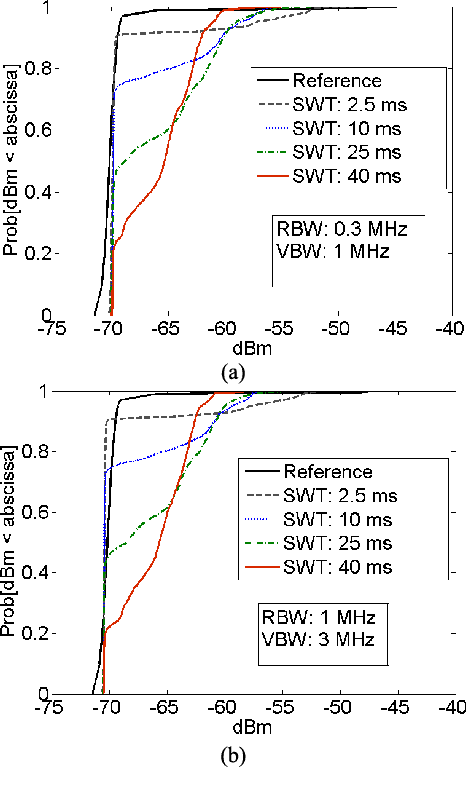Unai Gil
Measurements and Analysis of Temporal and Spatial Variability of WiFi Exposure Levels in the 2.4 GHz Frequency Band
Feb 07, 2024Abstract:This paper presents an evaluation of the WiFi exposure levels inside the university in the 2.4 GHz frequency band. The selected environment is the typical scenario where WiFi exposure concerns have increased in the last years, since a Wireless Local Area Network is deployed close to the users. Measurements of 1 h and 24 h of duration were performed to assess the temporal and spatial variability of the signal. Two instruments were employed, a spectrum analyzer appropriate configured for recording accurate and realistic samples and an exposimeter. A detailed description of the equipment, the measurement procedure and data analysis is provided in order to allow the reproducibility of these types of measurements. Finally, a comparison of the WiFi levels obtained by other authors is presented, concluding that all these methods are useful for determining WiFi exposure distribution, but if more accurate results are required, professional equipment appropriately configured should be used.
* 9 pages
Measurement Methodology for Determining the Optimal Frequency Domain Configuration to Accurately Record WiFi Exposure Levels
Feb 07, 2024



Abstract:Radiofrequency fields are usually measured in order to be compared with electromagnetic exposure limits defined by international standardization organizations with the aim of preserving the human health. However, in the case of WiFi technology, accurate measurement of the radiation coming from user terminals and access points is a great challenge due to the nature of these emissions, which are noncontinuous signals transmitted in the form of pulses of short duration. Most of the methodologies defined up to now for determining WiFi exposure levels use or take as reference exposimeters, broadband probes, and spectrum analyzers without taking into account that WiFi signals are not continuously transmitted. This leads to an overestimation of the radiation level that cannot be considered negligible when data of the actual exposure are needed. To avoid this, other procedures apply empirical weighting factors that account for the actual duration of burst transmissions. However, this implies the implementation of additional measurements for calculating the weighting factors, and thus, increases the complexity of the work. According to this, it was still necessary to define the frequency domain measurement setup that is optimal for obtaining realistic WiFi signal values, without requiring the performance of additional recordings. Thus, the definition of an appropriate methodology to achieve this goal was established as the main objective of this paper. The set of tasks carried out to identify such a configuration, as well as the limitations obtained for other measurement settings, are deeply explained in this paper.
* 10 pages
 Add to Chrome
Add to Chrome Add to Firefox
Add to Firefox Add to Edge
Add to Edge